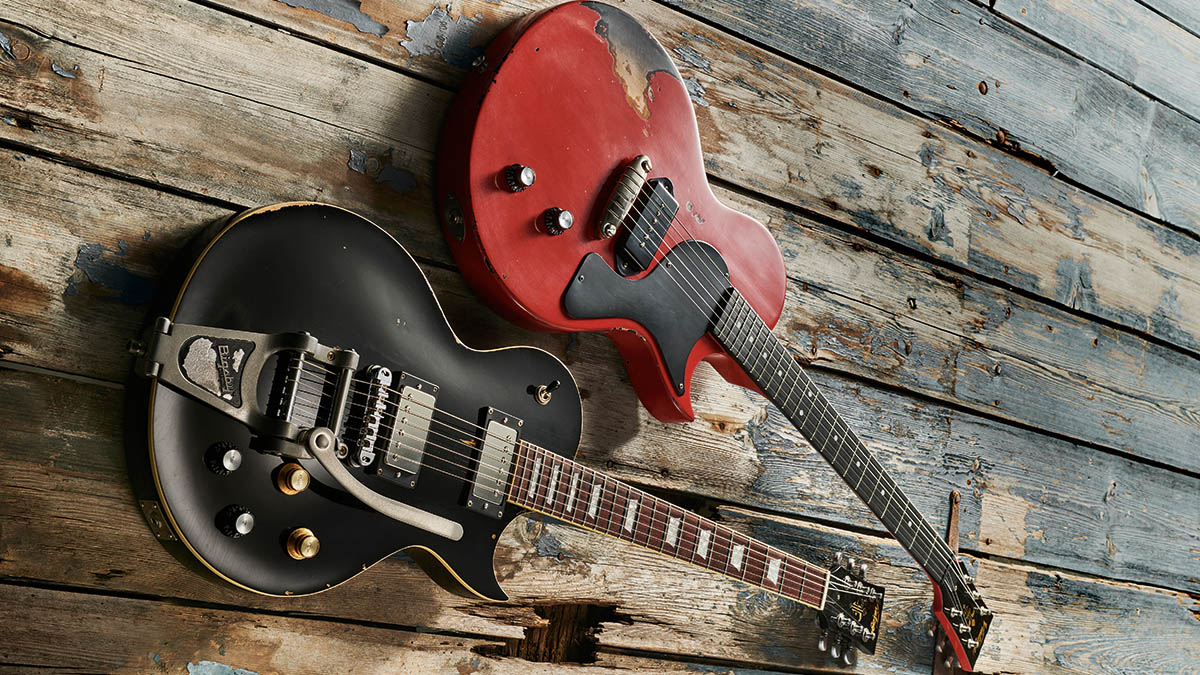Guitar World Verdict
The V120 is a cracking Junior-style build with real-world aged refinish – definitely worth a punt, while the V100 is best new Vintage guitar we’ve ever played.
Pros
- +
Excellent vibe-y ageing.
- +
Great sounds from those Bare Knuckle pickups.
Cons
- -
Not everyone will want to pay this money for a pimped East Asian chassis.
You can trust Guitar World
We last caught up with Vintage, the house brand of the large and long-running UK distributor John Hornby Skewes (JHS) to celebrate its 25th Anniversary.
Many players will be familiar with its legal copies of many classics, and the company was also quick to jump on the relic bandwagon with its Icon range, which started back in 2006 and currently features over 20 models aged at their source in the Eastern Asia.
The ProShop Unique electric guitars were launched just before the pandemic at Winter NAMM 2020. However, these instruments are created from standard Vintage Reissued or Icon models in Garforth, Leeds, at JHS’s HQ. It’s not really a range as much as a continuing collection of one-offs, often quite heavily distressed, using a selection of aftermarket parts.
Each guitar includes a Vintage-branded luxury gigbag, ProShop leather strap, pick tin, t-shirt and certificate of authenticity.
Obviously, since all the modding and refinishing work is done in the UK, these ProShop Unique models can easily double the prices (or more) of the regular Vintage models – and the builds so far start at £569 for a lightly reliced standard Strat-inspired V6, up to £1,299 for a Bare Knuckle-equipped Keef-style V52 five-string named ‘Brown Sugar’.
We were asked to spec a couple of builds for this review. Here’s what we got…
V120

Many people creating one-off relics like to imagine a backstory because that can really influence the choice of upgrades and relicing level. This one, for example, is based on this writer’s experience of being asked to evaluate a Les Paul Junior some years back that a friend had been offered.
Apparently a 50s Junior previously owned by a big-name player, it had been heavily, ahem, customised with a bright red refin. It might have said Gibson on the headstock, but we couldn’t find any part on the guitar that we could 100 per cent ID as being from a real Gibson. For all we knew, it could have been a copy with a faux Gibson headstock facing masquerading as a mucked-about real LP Junior.
No-one is going to mistake this V120 for the real thing. The headstock, with its fluted square top, might not be as graceful as some, and the V120 and our V100 share a similarly thinned and pointed horn on the treble side, plus a curved shaping to the top of the body that recalls an Aria Pro II more than a Gibson from the 50s.

Based on the Vintage V120TB, which will cost you £339, the body and neck are spec’d as mahogany – we don’t know any more than that – and you can certainly see that through the simulated wear-through of the red finish. While it’s not the lightest Junior we’ve ever encountered, it’s only marginally heavier than our original.
The only other wood we can see, the fingerboard, is actually something called Lignum Rosa, a name created by experienced guitar designer Alan Entwistle (the man behind the Revelation brand) for this multi-layered wood construct, which is ‘quarter-sawn’ so the layers create a grain that’s at a right-angle to the face. It actually looks like a rosewood, although the fingerboard here is much darker in colour than the V100’s.
Aside from the aged refin, then, upgrades over the standard Reissued model are extensive: Grover Deluxe strip tuners, Graph Tech’s ResoMax intonated wrapover, and a Bare Knuckle Boot Camp Old Guard dog-ear P90.
All the hardware and paint ageing is done in-house and each ProShop Unique also gets a pretty thorough setup, including a fret-level, recrown and polish, and noticeable work to the edges of the fingerboard. All in all, it’s a pretty thorough makeover.
V100
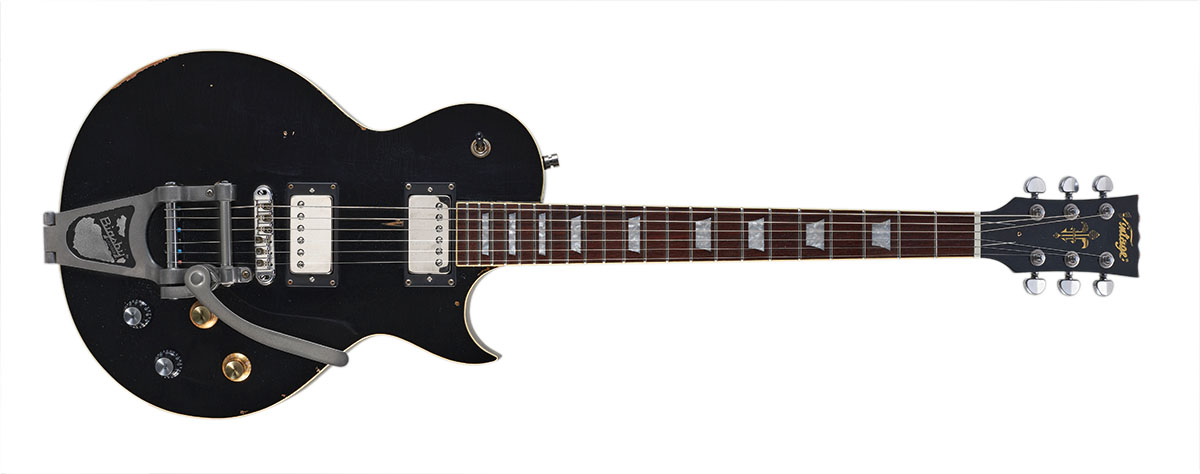
Based on the V100 Boulevard Black (over Gold) we saw in the current ProShop Unique collection, we simply asked for a lighter level of ageing and a pair of Bare Knuckle Boot Camp Old Guard humbuckers to augment the Bigsby, which is aged, as is the bridge with its lockdown roller saddles.
The Grover Rotomatics look nicely old, too, and have rear locks, the top-hat knobs are mismatched in colour, and there’s no collar around the toggle switch. Headstock and shape aside, this comes across as a Les Paul Standard of a certain age that’s been modded and heavily gigged over the years.
While our V120’s red-over-sunburst finish is pretty realistic in its wear and the red top-coat has a dulled gloss sheen and no cracking or crazing, it’s more like a Gibson VOS finish with a few more dings, to be honest.
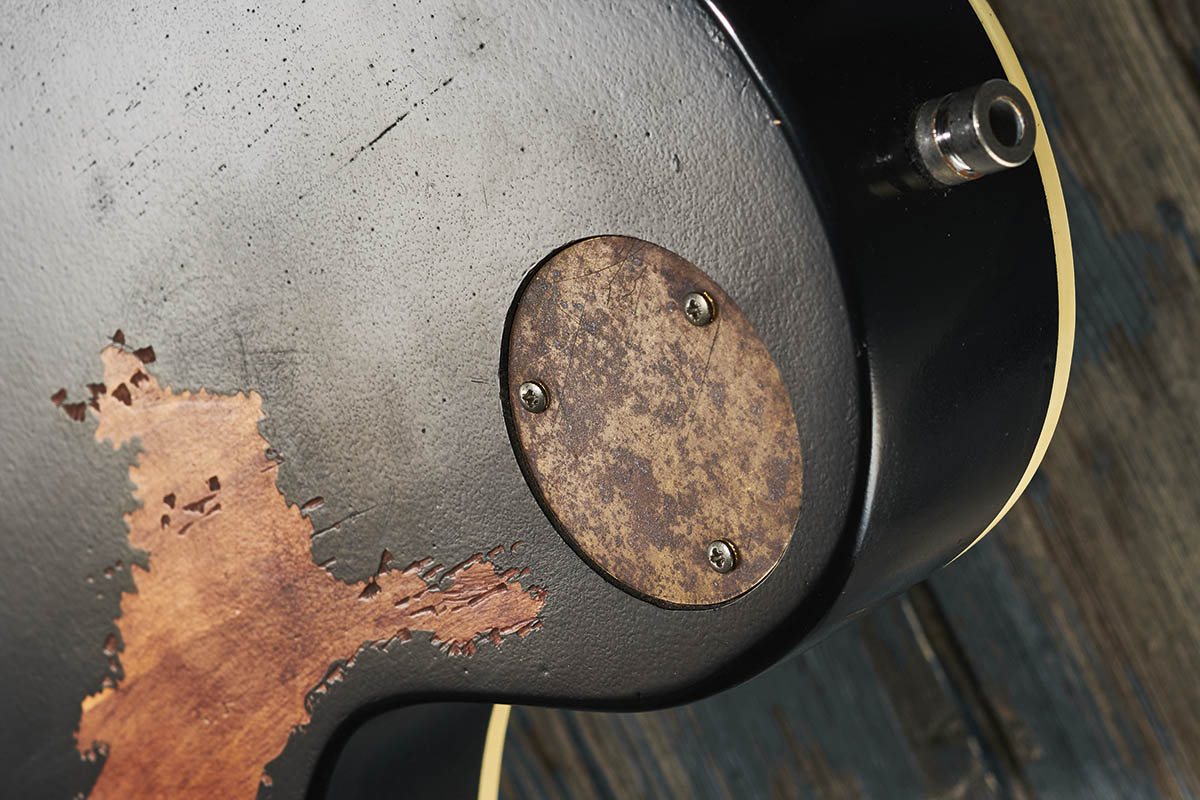
The black body face of this V100, however, is noticeably crazed, which is mirrored more lightly on the headstock face, while the back, sides and neck back (pretty much the standard factory finish) appear like they were refinished back in the 70s with sandpaper and a spray can.
The Vintage and fleur-de-lis headstock inlays look like they’ve been in a fight with the chicken wire in front of the stage – and, of course, you know it’s all make-believe, but you really can imagine the life and history of a guitar that ends up looking like this.
The brass rear-cavity covers certainly recall the brass parts craze of the late 70s; the fact that they’re actually hand-cut from old time-aged brass sheet just adds to the backstory. Numerous small details such as this really add to the illusion.
Like the V120, the only bare wood we can see is that man-made fingerboard, but according to the spec this is a mahogany body with a maple top. The thicker body, not to mention that Bigsby, add to the weight here, which edges just past the 4kg (9lb) mark. But that’s not over-heavy and, frankly, if you can live with the fact it’s got the wrong headstock and horn shape, what’s not to like?
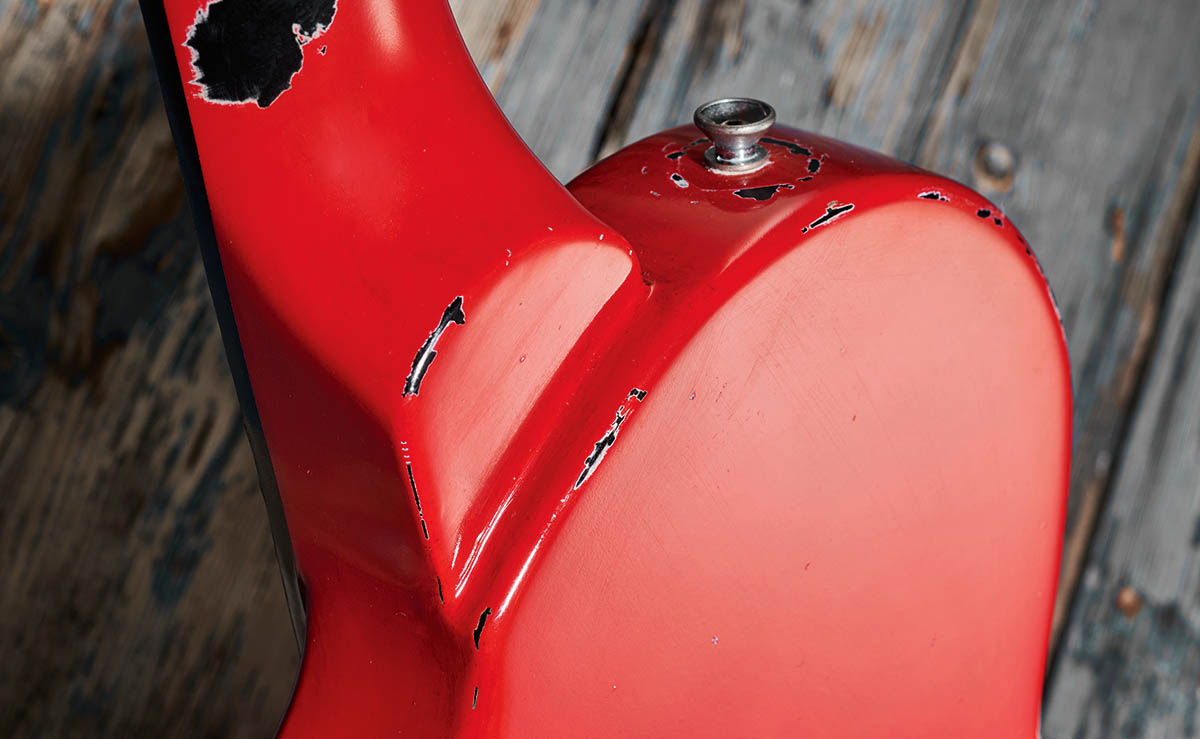
Feel & Sounds
It’s pretty rare, to put it mildly, that we feel new review guitars need a clean up and restring before we test them. These don’t, either, of course, but we can’t shake the feeling that these are instruments we’ve just purchased off eBay – in which case, the first thing we’d do is give them a clean up, restring and set them up. But no, you’re good to go, certainly on the playability front.
On our V120, the fret ends don’t quite have a boutique roundness to their ends – again, they feel and look like a competent refret from a few years ago. The fingerboard edges are nicely broken in, and here’s a neck shape that sits between a bigger rounded 50s style and slimmer 60s. Extremely good.
The V100’s neck is fractionally smaller in width and depth, the neck back a little rougher and less smooth in feel. Sound-wise, both our clones do the expected job with some panache.
The V120 certainly doesn’t harm the legacy of the guitar it’s modelled on: that very direct, raw midrange voice is definitely here. No, it doesn’t match the depth of the real thing nor its thumpy resonance, but it’s in that ballpark; likewise, the range of the controls. But even if you play with both controls full up, a Junior on full chat is quite something, as is this V120. The V100 also has its own thing going on.
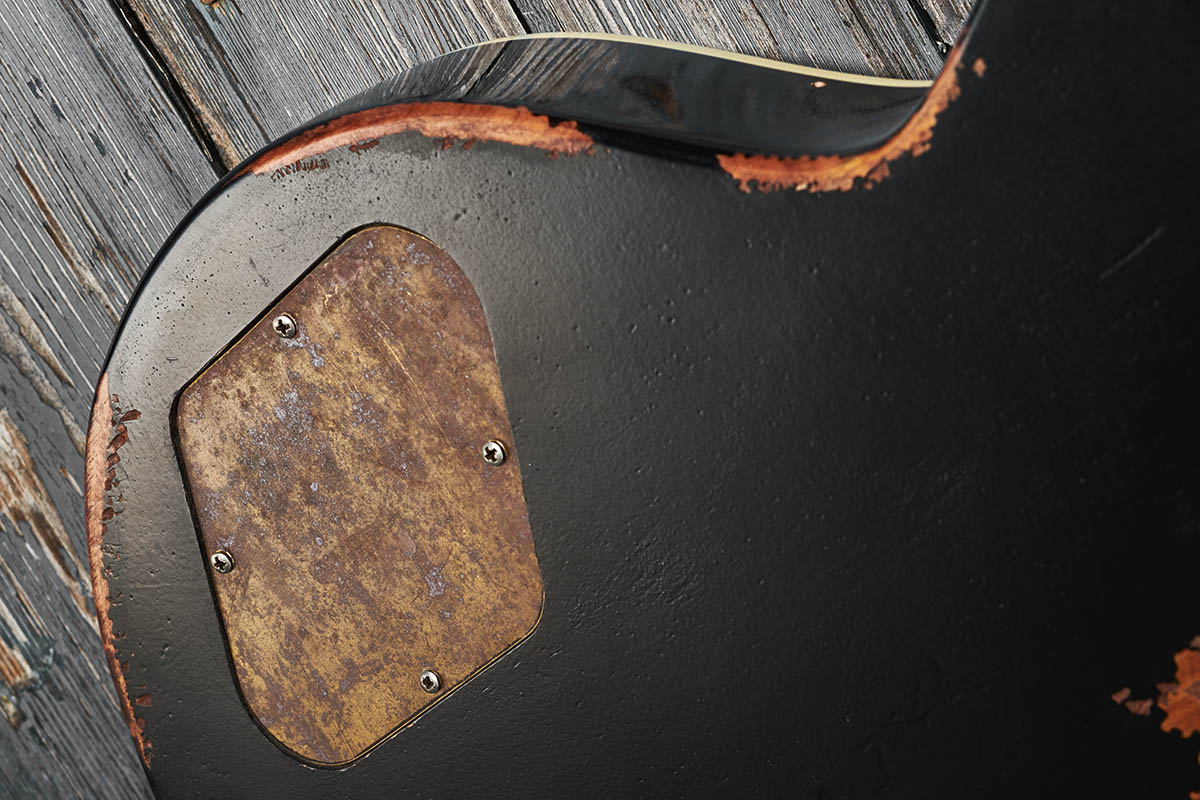
The Old Guard Boot Camp units have to be one of the best pickup swaps you can make and drop us right into PAF world with a bit of heat at the bridge. In combination with the construction, you’ll struggle to get any ice-pick highs from the bridge pickup, while the Bigsby just seems to add a little more openness to the voice.
Played pretty clean and loud, it’s a very valid example of the style. Add some Marshall-y grit and things just get better; our reference Gibson Les Paul Classic now sounds a little underpowered with its Burstbucker 1 and 2 retrofitted ’buckers. There’s a noticeable difference to the midrange too, with the Vintage being just a little more open; the real thing has a little more snarl.
The Bigsby does get in the way of the neck pickup volume, but that’s a trade-off we can live with. This is a hugely viable piece that not only feels a lot better in the hand than any standard V100s we’ve tried over the years but its sounds are on a completely different level, too. We’d take this on a gig as is with no hesitation.
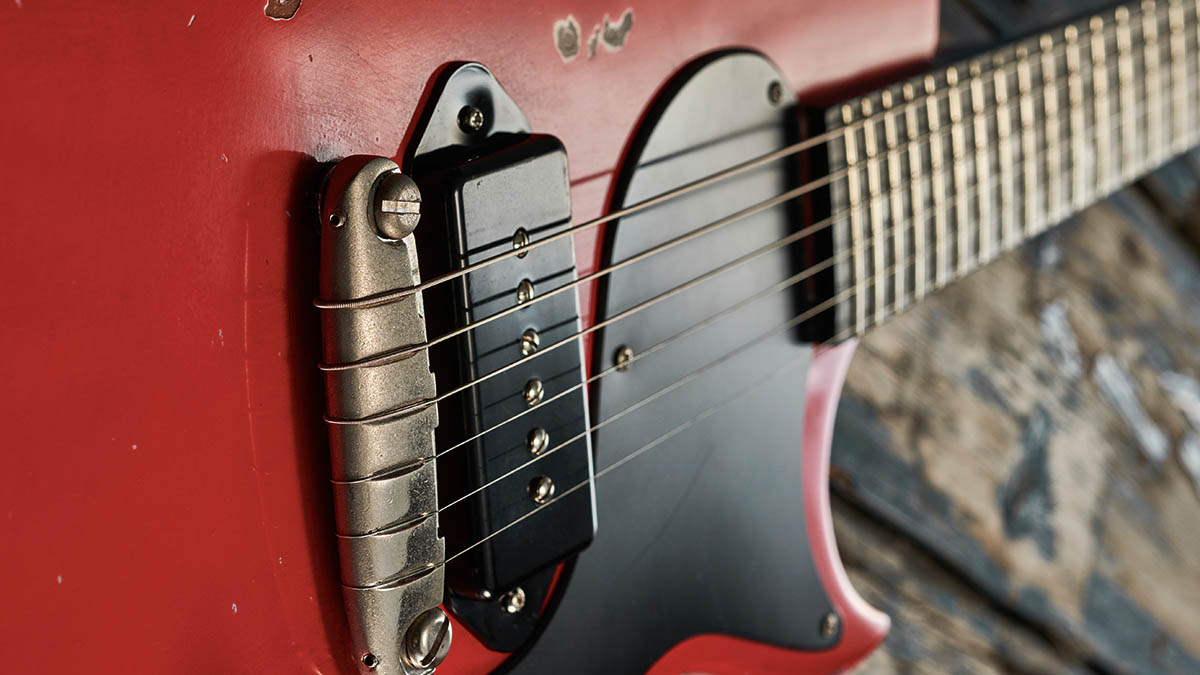
Verdict
These are rather difficult guitars to evaluate. First off, they feel in a completely different league to any new Vintage guitar we’ve ever played and reinforce how a lower-end guitar, properly set up and revoiced, can really perform at a much higher level than its original price would suggest.
Add in the comfort treatment for the necks, the great-sounding Bare Knuckle pickups and the vintage-y vibe created by the very believable ageing, and we’re scratching our heads a little. On the one hand, we’ve been conditioned that Vintage has lower-to-mid three-figure prices.
Bearing in mind the work and parts cost, we’re not saying these are overpriced – it’s just that they seem expensive, don’t they? Well, until you try to find an equivalent new guitar, that is. Or are we just badge snobs? Slaves to those classic brand names on our headstocks.
Answers on a postcard, please. It’s down to personal preference, really. But on the presented evidence, we’d be happy to take these on any stage and leave our perhaps-more-valuable instruments to stay cased. Beaters with huge vibe and sounds that are perfectly good enough? We can only say yes.
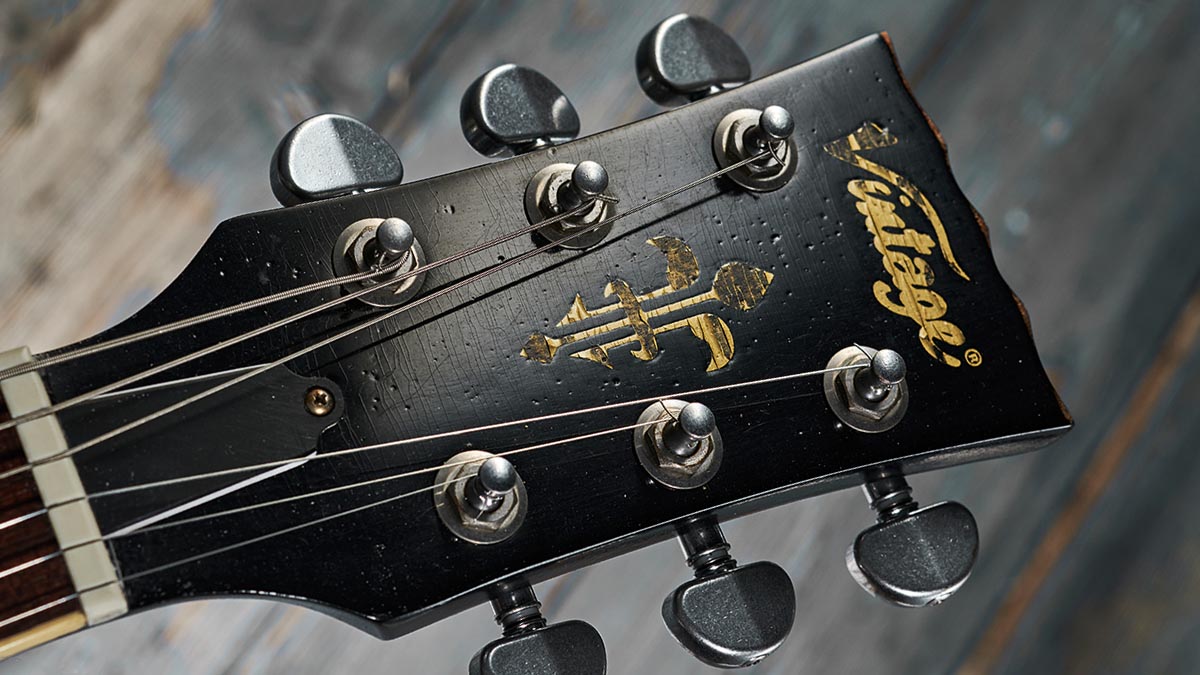
Specs
Vintage ProShop V120

- PRICE: £999 (inc gigbag)
- ORIGIN: China/Vietnam
- TYPE: Single-cutaway solidbody electric
- BODY: Mahogany
- NECK: Mahogany, glued-in
- SCALE LENGTH: 629mm (24.75”)
- NUT/WIDTH: Graph Tech NuBone/43.2mm
- FINGERBOARD: Lignum Rosa, pearloid dot inlays, 305mm (12”) radius
- FRETS: 22, medium jumbo
- HARDWARE: Graphtech ResoMax Sonic 1 wrapover bridge, Grover V138N tuners - aged nickel
- STRING SPACING, BRIDGE: 52.4mm
- ELECTRICS: Bare Knuckle Boot Camp Old Guard P-90 single coil w/ dog-ear cover, master volume and master tone
- WEIGHT (kg/lb): 3.55/7.81
- OPTIONS: Check the Vintage website
- RANGE OPTIONS: In the standard Vintage Reissued range, the V120 starts at £339; the aged Vintage Icon costs the same
- LEFT-HANDERS: Not this model
- FINISHES: Aged Red over Sunburst – acrylic aged top-coats
Vintage ProShop V100

- PRICE: £1,499 (inc gigbag)
- ORIGIN: China/Vietnam
- TYPE: Single-cutaway, carved top solidbody electric
- BODY: Mahogany with carved maple top
- NECK: Mahogany, glued-in
- SCALE LENGTH: 629mm (24.75”)
- NUT/WIDTH: Graph Tech Tusq XL/41.7mm
- FINGERBOARD: Lignum Rosa, pearloid ‘crown’ inlays, 305mm (12”) radius
- FRETS: 22, medium jumbo
- HARDWARE: Licensed Bigsby B70, locking roller-saddle bridge, Grover Roto-Grip Locking Rotomatic tuners – aged nickel
- STRING SPACING, BRIDGE: 50.5mm
- ELECTRICS: Bare Knuckle Boot Camp Old Guard humbuckers, 3-way toggle pickup selector switch, individual volume and tone controls for each pickup
- WEIGHT (kg/lb): 4.22/9.28
- OPTIONS: Check the Vintage website
- RANGE OPTIONS: In the standard Vintage Reissued range, the V100 starts at £369; the aged Vintage Icon versions at £419
- LEFT-HANDERS: Yes, the Reissued V100 lefty is available in 3 versions from £439; there’s a single Icon model, in Lemon Drop finish at £529
- FINISHES: Aged Black over Goldtop – aged nitro-cellulose body top and headstock
- CONTACT: JHS

Dave Burrluck is one of the world’s most experienced guitar journalists, who started writing back in the '80s for International Musician and Recording World, co-founded The Guitar Magazine and has been the Gear Reviews Editor of Guitarist magazine for the past two decades. Along the way, Dave has been the sole author of The PRS Guitar Book and The Player's Guide to Guitar Maintenance as well as contributing to numerous other books on the electric guitar. Dave is an active gigging and recording musician and still finds time to make, repair and mod guitars, not least for Guitarist’s The Mod Squad.
“It holds its own purely as a playable guitar. It’s really cool for the traveling musician – you can bring it on a flight and it fits beneath the seat”: Why Steve Stevens put his name to a foldable guitar
“Finely tuned instruments with effortless playability and one of the best vibratos there is”: PRS Standard 24 Satin and S2 Standard 24 Satin review
